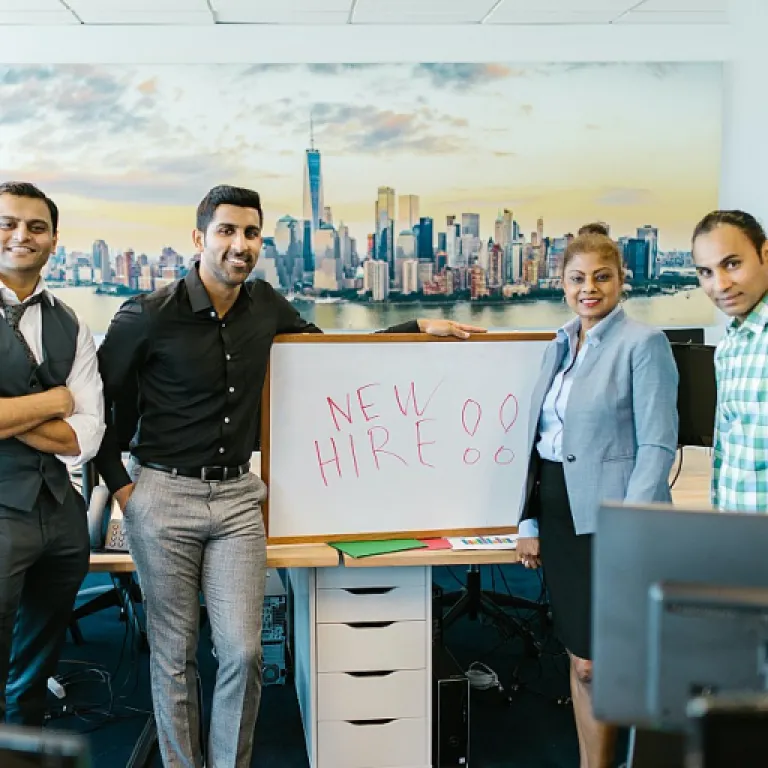
Understanding Corporate Wellness Retreats
Exploring the Concept of Corporate Wellness Retreats
In today's fast-paced work environment, the importance of employee well-being has never been more pronounced. Corporate wellness retreats have emerged as a pivotal strategy for enhancing employee wellness and fostering a positive workplace culture. These retreats are designed to provide employees with a break from their daily routines, offering a chance to recharge and focus on their mental and physical health.
At their core, wellness retreats aim to reduce stress and promote mental clarity among team members. By incorporating activities such as sound baths, meditation sessions, and team building exercises, these retreats help employees manage stress and improve their overall mental health. The focus is not just on relaxation but also on equipping employees with tools and techniques for better stress management when they return to work.
The Role of Corporate Retreats in Employee Experience
Corporate retreats are more than just a getaway; they are a strategic investment in employee well-being. By prioritizing wellness initiatives, companies can enhance job satisfaction and foster a more engaged and productive workforce. These retreats provide a unique opportunity for team members to connect outside the traditional workplace setting, strengthening relationships and improving team dynamics.
Moreover, wellness retreats can be tailored to address specific needs within a company. Whether it's focusing on mental health, physical wellness, or team cohesion, these retreats offer a customizable approach to employee wellness. Companies like Hilton have successfully integrated wellness programs into their corporate culture, setting a benchmark for others to follow.
For those interested in understanding the broader implications of such initiatives, exploring resources on maximizing benefits can provide valuable insights into how wellness retreats fit into the larger picture of employee experience.
Benefits of Wellness Retreats for Employees
Insights into Employee Benefits from Wellness Retreats
Corporate wellness retreats offer a wealth of advantages for employees, contributing to their overall well-being and enhancing the workplace environment. By participating in these wellness programs, employees are given the opportunity to unwind and recharge, thereby improving their mental health and job satisfaction. This is achieved through a variety of activities such as team building, stress management sessions, and incorporating sound healing practices, like sound baths, which is gaining popularity for its soothing effects.
One of the most significant benefits of wellness retreats is the reduction of stress. In today's fast-paced corporate world, stress management is vital to maintain a healthy work-life balance. Retreats provide a much-needed break from the usual routine, enabling employees to disconnect from work stress and focus on their mental clarity. This shift in focus can lead to enhanced productivity and creativity, as employees return to the workplace with a fresh perspective and renewed energy.
Moreover, wellness retreats promote physical health through structured activities and workshops that encourage exercise and healthy living habits. These retreats often include guided health sessions and wellness initiatives aimed at educating employees about the importance of physical activity and self-care, which can be sustained post-retreat for long-term health benefits.
The sense of community built during these retreats is another critical component. Employees who participate in corporate retreats often form stronger bonds with their team members. This camaraderie fosters a supportive work environment where collaboration and open communication thrive. When team members connect on a more personal level, it can lead to improved teamwork back at the office.
Implementing corporate wellness retreats is an investment in the employee experience. For instance, companies like Hilton have successfully integrated wellness retreats into their employee wellness programs, reflecting a commitment to employee well-being. Such initiatives not only enhance the employee well-being but also align with the company's overall wellness strategy.
For a deeper exploration of the broader employee benefits that may be provided in your workplace, consider checking out the benefits offered by Eagle Foods.
Ultimately, wellness retreats are a strategic approach to improving the employee experience, creating a ripple effect that benefits both the individual and the corporate entity as a whole.
Designing an Effective Wellness Retreat
Crafting a Holistic Corporate Wellness Experience
Designing an effective wellness retreat requires a comprehensive approach that encompasses various aspects of employee well-being. These retreats should go beyond the typical team-building activities and offer a holistic experience that fosters health, mental clarity, and stress management.The first step in crafting a successful wellness retreat is understanding what employees truly need. Engaging your team members in surveys or feedback sessions can offer valuable insights into the type of wellness initiatives they would appreciate. It allows organizations to tailor retreats to address specific stressors or interests, promoting a sound work environment.
Incorporating a range of wellness programs can cater to diverse preferences within your team. For example:
- Stress-reduction techniques such as meditation, yoga, or nature walks to balance mental health and reduce workplace stress.
- Sound baths or healing sessions can enhance mental clarity, offering therapeutic experiences that realign focus and promote inner peace.
- Workshops on nutrition and fitness to support a healthy lifestyle and enhance overall health.
- Providing safe spaces where employees can share experiences and build stronger connections with peers, enhancing job satisfaction and team will.
A crucial consideration is selecting the right venue, such as a serene natural environment or resorts like Hilton that offer comprehensive wellness facilities. A location that aligns with the retreat's goals can significantly impact the employees' experience, helping to create a sound bath of calm and relaxation.
While designing these retreats, ensure that activities do not overwhelm or leave employees feeling pressured to participate. The essence of a corporate wellness retreat is to rejuvenate and recharge, not add stress. With a focus on employee wellness and creative rejuvenation initiatives, companies can ensure that retreats offer meaningful benefits, enhancing overall workplace morale and productivity.
Challenges in Implementing Wellness Retreats
Navigating Barriers and Overcoming Hurdles
Implementing wellness retreats in a corporate setting can bring a unique set of challenges. While the benefits of such retreats are evident in enhancing employee well-being, several obstacles need to be acknowledged and addressed effectively.- Budget Constraints: One of the primary barriers is financial limitations. Organizing wellness retreats requires a significant investment in terms of both time and resources. Companies may hesitate, fearing that the costs may outweigh the perceived benefits. However, it is crucial to recognize the potential return on investment in terms of increased productivity and reduced absenteeism.
- Employee Engagement: Ensuring employee buy-in and participation can be another hurdle. Not all employees may initially see the value in stepping away from their usual work routine, even if the intention is to improve mental health and reduce stress. Companies should focus on clear communication about the benefits and goals of the retreat, possibly incorporating testimonials or case studies from previous retreats.
- Time Constraints: Finding a suitable time that aligns with company operations and employee availability can be difficult. Organizations need to balance their commitment to ensuring business continuity with prioritizing employee wellness and ensuring that the chosen time does not add to workplace stress.
- Customization and Relevance: It is essential to tailor the wellness retreat to meet the diverse needs of employees from different departments and hierarchy levels. A one-size-fits-all approach might not be effective, so companies should gather employee feedback before planning activities like sound healing sessions, team building exercises, and stress management workshops.
Case Studies of Successful Retreats
Examining Successful Retreats and Their Outcomes
Diving into real-world examples can provide valuable insights into the impact and effectiveness of corporate wellness retreats. Various organizations have embraced the idea of retreats to promote wellness and have witnessed varying levels of success. One multinational company implemented a wellness retreat that focused heavily on stress management and mental health. The retreat included sessions on stress reduction techniques, such as mindfulness meditation and sound baths, which helped employees attain mental clarity and reduce stress levels. Post-retreat surveys indicated a significant boost in employee wellness and job satisfaction, underscoring the effectiveness of such wellness initiatives. Another organization opted for a more team-centric retreat that emphasized team building alongside individual wellness activities. Incorporating sound healing sessions alongside traditional team-building exercises, employees reported feeling more connected and supported by their peers. This approach not only improved personal well-being but also fostered a stronger sense of community within the workplace. A global hotel chain combined the benefits of a wellness retreat with career development workshops. Employees participated in a mix of wellness programs like yoga and sound baths, combined with professional development sessions. The outcome was a rejuvenated workforce equipped with both mental and professional tools to enhance their workplace experience. These case studies highlight the diverse approaches companies take in executing wellness retreats, proving that customized retreats focused on both the mental and physical health of employees can lead to tangible benefits. Organizations are encouraged to evaluate their team’s unique needs and customize the retreat to maximize overall employee well-being.Future Trends in Corporate Wellness
Emerging Directions in Workplace Wellness Initiatives
As organizations venture into the realm of corporate wellness retreats, it's essential to keep an eye on future trends that promise to redefine employee well-being. These emerging directions highlight the evolving priorities in enhancing the employee experience in today’s dynamic work environments.- Integrative Wellness Approaches: Companies are increasingly looking beyond traditional wellness programs to encompass a more holistic approach. This includes integrating practices that promote not only physical but mental health as well, such as sound healing and mental clarity sessions. Sound baths, for example, have gained popularity as they help reduce stress and improve mental health.
- Personalized Wellness Experiences: To boost job satisfaction and employee wellness, there is a growing trend to tailor wellness retreats to meet the specific needs of team members. This approach acknowledges that wellness is not one-size-fits-all and focuses on individual preferences and goals.
- Technological Integration: The use of technology to enhance the wellness retreat experience is on the rise. Apps that track health metrics and meditative VR sessions are becoming commonplace, offering employees new ways to engage in wellness initiatives.
- Focus on Preventative Health: Wellness retreats are increasingly emphasizing the importance of preventative measures in health. This includes stress management techniques and sound bath experiences that aim to keep employees well in the long term, reducing the risk of burnout.
- Combining Work with Wellness: Corporate retreats are being designed to blend work and wellness seamlessly. By providing a setting where work tasks and wellness activities coexist, employees can experience reduced stress and increased productivity.
- Strategic Partnerships: Organizations are exploring partnerships with wellness experts and resorts to deliver high-quality retreats. Collaborations with established wellness brands, like Hilton, enhance the credibility and attractiveness of retreats.













